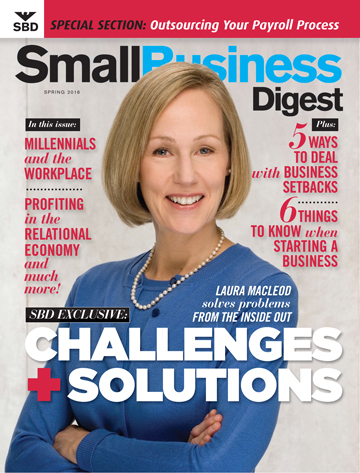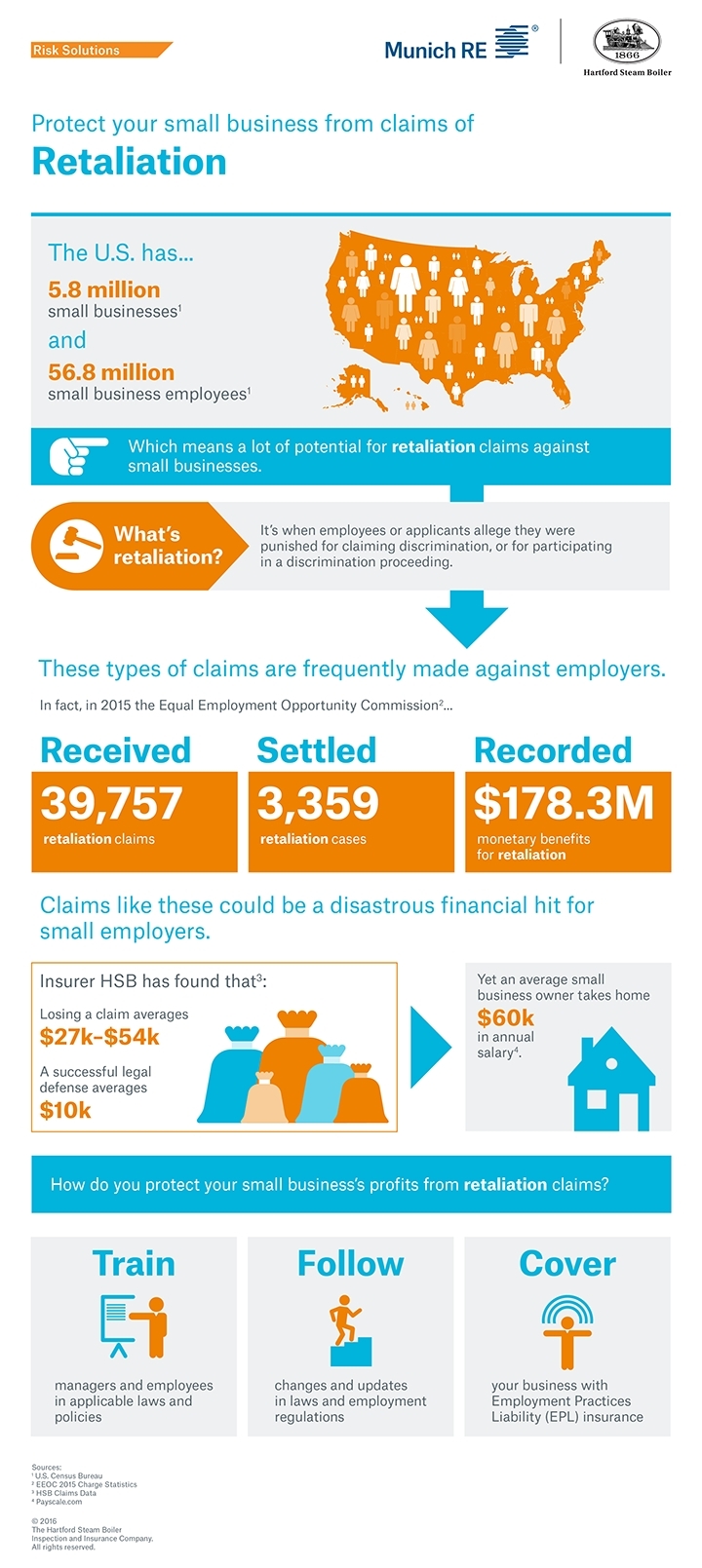Personnel Administrative Alternatives For Small Businesses
 The effective administration of payroll and human resources policies, procedures, record keeping communications and plan design present a huge challenge to every organization.
The effective administration of payroll and human resources policies, procedures, record keeping communications and plan design present a huge challenge to every organization.
Recent frequent and sweeping changes in health care programs, compliance requirements and reporting efforts have only served to compound the complexity of this challenge.
While larger organizations may have the staff and expertise to handle what's required, small and medium-sized businesses often bear the greatest burden. While they have done the best they can, we have seen a huge uptick in the number of companies wishing to outsource all or some of their payroll and human resource functions to outside vendors.
Pamela Evette, CEO, Quality Business Solutions has created the following primer to arm small businesses with the information they need to have more productive and informed discussions.
Where to start? A natural starting point is to decide whether payroll and HR outsourcing are viable solutions for you and to gain clarity on the options available under that umbrella. The most basic question is what services are offered. The simple answer to that is that most small- to medium-sized businesses will outsource their back-office functions to either a PEO or an ASO, which leads us to the next question.
It is important to note that to enter into either type of agreement, a company must outsource its payroll to its PEO or ASO. For any of these situations, the PEO or ASO is required to be the common paymaster.
What is a PEO? A PEO, or professional employer organization, provides outsourced human resources services and back office solutions, including payroll, benefits, employee administration and workers’ compensation to other companies.
PEOs deliver their services through a co-employment arrangement in which client workers become joint employees of their company and the PEO, being paid by the PEO directly with the PEO serving as their employer of record for tax and insurance purposes. In other words, the client is the onsite employer and the PEO is the administrative employer. While employers retain control over operations and workforce management in this scenario, hiring a PEO allows them to transfer much of their compliance burden and employer-related risks to the PEO.
PEOs also offer deep HR expertise, allowing them to consult on HR strategy, processes and best practices to create customized programs designed to meet specific business needs and goals.
According to the National Association of Professional Employer Organizations (NAPEO), there are hundreds of PEOs operating in the United States, working with between 156,000 to 180,000 businesses which employ between 2.7 and 3.4 million people. The industry generates between $136 and $156 billion in gross revenues annually.
What is an ASO? An ASO, or administrative services association, offers many of the same services as a PEO. The main difference is that ASOs do not become co-employers of their clients’ employees. While ASOs handle administrative tasks and may be very active in selecting and securing coverage, the client remains the sole sponsor and retains all risk. All paperwork is filed under the client’s employer identification number (EIN). While ASOs can provide counsel on compliance issues, it is the employers’ sole responsibility to take action.
Companies acting as the common paymaster in an ASO arrangement can still pass along many of the benefits to ASO clients including access to multiple employer plans (MEPs) for 401ks and other voluntary insurance plans. Participation in an MEP affords overall richer plans than those that can generally be offered by smaller employers acting alone.
What types of services are handled by ASOs and PEOs? As previously mentioned, all PEOs and ASOs must serve as the common paymaster, so outsourced payroll services must be part of any arrangement. Beyond that, PEOs and ASOs may offer a wide range of back office employee-related services, health care benefit program design and vendor selection, retirement plan design and administration, workers’ compensation, compliance, risk management, safety and training and development. It is important to note
While not all ASOs and PEOs offer the same services, most offer bundled services that allow clients to work through one vendor, rather than multiple vendors, such as payroll companies, insurance brokers, employment law firms and certified public accountants (CPAs). This provides several added benefits, including cost-savings, increased employee retention and improved recruiting power due to the ability to provide a higher-level of benefit offerings to employees.
What are the primary benefits of outsourcing HR functions?
Outsourcing HR-related functions frees time and resources to allow them to focus on their core business while giving them cost-effective access to experts in this field.
Having access to very experienced HR administration professionals minimizes risk and ensures legal and technical compliance, while reducing the burden on employers.
Using a PEO allows employers to take this benefit a step further, as the PEO becomes the employer of record in employment law matters and the benefits plan sponsor – with a PEO managing, maintaining and housing all records for clients, this removes a significant burden in terms of paperwork and compliance.
The right outsourcing partner will provide consulting expertise to address key business challenges.
ASO/PEO agreements can be customized and tailored to allow the vendor to handle as much or as little as each client needs.
What is the cost for this type of service?
PEOs generally charge of service fee of 2-4 percent of gross payroll, in addition to certain employee-related overhead costs, such as the employer’s share of normal withholdings (FICA, Medicare, unemployment, etc.) Some clients incur a fee of as little as 1 percent, while others may be charged up to 5 percent.
Because ASOs offer more a la carte services, their fees are typically per check or contract, rather than based on a percentage of gross payroll.
Who assumes the risk in each scenario? By becoming the employer of record for most employment legal compliance related issues, PEOs assume much of the risk for their clients. In an ASO arrangement, the employer retains risk and compliance responsibilities.
What types of companies are best suited to PEOs/ASOs? Because larger companies can serve as their own plan sponsors and often have more HR staff, the PEO/ASO model is best suited for small and medium-sized businesses. ASO services are often attractive to larger companies looking to outsource specific HR functions including payroll, Affordable Care Act (ACA) compliance, benefits administration (i.e. COBRA) and Family and Medical Leave Act (FMLA) compliance. With the ever-evolving regulations and complexity that comes when working across multiple states, PEOs and ASOs can offer a level of expertise that would be challenging to fulfill in-house for growing organizations, regardless of size.
What are the most common errors companies make related to employee administration issues? Employee administration is complex and governed by a whole host of regulations, which can create confusion that can lead to mistakes by even the savviest organizations. Below are a few of the most common mistakes:
- The timing of benefits coverage is a major sticking point for many employers. The Affordable Care Act has further complicated this issue as guidelines change depending on when an employee was hired, how they are classified and when they become eligible for coverage. Errors often occur when coverage isn’t offered to employees within the proper timeframe.
- Not having a full understanding of regulations including COBRA and FMLA is another area that can lead to legal and financial trouble. Moreover, laws, regulations and even minimum wage can vary from state to state. If you are a company moving into a new state, it can be easy to make a costly mistake – incurring large fines that could be detrimental to your growing business.
- Many organizations, especially those that are smaller, do not realize the full level of coverage they should have or even the different types of coverage available. One example is Employment Practices Liability Insurance (EPLI), which some PEOs wrap into their services. This coverage protects employers against claims made by employees alleging wrongful acts arising from the employment process, including wrongful termination, discrimination, sexual harassment and retaliation.
- Lastly, one of the most critical and seemingly straightforward issues often results in the most confusion. Lack of a comprehensive understanding of the rules for hourly vs salaried employees for payroll purposes also often leads to mistakes or legal problems.
Where have the biggest recent changes occurred in this area? The Affordable Care Act (ACA) has had the biggest impact on our industry and employers of all sizes. In 2016, the ACA will extend to an even greater number of companies as the threshold number of employees continues to decrease. PEOs help to ensure clients are in compliance. Consequently, PEOs are generally extremely diligent and systematic in meeting the additional requirements for reporting as well as staying on top of any potential changes that could occur this year and in the future.
Beyond ACA implications, the way employees receive pay has also been affected by mounting changes in the payroll tax laws, not to mention that minimum wage limits are also constantly changing between different states and can even differ at the local level.
What should a company look for when choosing a PEO/ASO? If outsourcing is for you, you must first decide whether you need an ASO or a PEO. The most critical question related to this decision is “How much work do I need them to do?” If you would like to retain more direct control over certain areas, an ASO is likely best for you. If you prefer to minimize your hassle and risk, a PEO makes more sense.
In terms of choosing a specific PEO or ASO, remember that not all vendors are created equal. Look for companies that have deep expertise in the field, are stable and growing organizations and can offer references. It’s also important to review the quality and track record of vendors and partners with whom different PEOs have aligned themselves. At QBS, we deal with vendors that specialize in the payroll PEO industry, so they can be sensitive to the challenges we face on a daily basis.
Finding the right personal fit is also very important. Make sure they are willing to tailor their services to your specific needs and are able to offer solid consulting advice based on business acumen and experience, rather than simply working on administrative tasks.
Getting started While it is undoubtedly difficult for smaller and medium-sized businesses to navigate the waters of employee administration issues, help is available. PEOs and ASOs can provide the expertise and bandwidth needed to offer more competitive benefit packages to aid in recruitment and retention, to reduce costs, ensure compliance with complicated and ever-changing rules and regulations and mitigate risk. They provide a cost-effective and scalable resource to provide as much or as little help as your organization needs.
For more information or to set up a consultation to see how a PEO or ASO can help you, visit www.qualitybsolutions.net.




